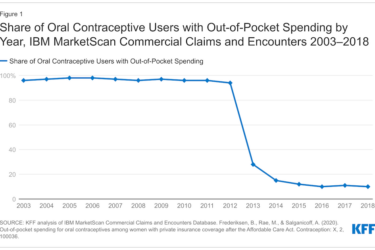
Indiana is embarking a new way to deliver mental health care to Medicaid members. John Wernert, M.D., a psychiatrist who heads Indiana’s Medicaid agency, is introducing telemedicine to deliver psychiatric and other mental health services to patients, including the approximately 85 percent of patients who have what he calls rather modest behavioral health needs.
Indiana’s telemedicine initiative is important because the state is one of only a few adopting telehealth statewide. More widespread use of telehealth has been slow due to concerns about costs, as Phil Galewitz reported for Kaiser Health News last month.
Among the reasons adoption is slow is the lack of reimbursement for physicians and other providers who use telehealth services and resistance to telehealth among some physicians, patients and regulators, according to the newsletter HIT Consultant. Telemedicine is also called telehealth, telehealth consults, telehealth video consultations (TVCs), econsults, evisits, remote video consultations and digital health.
The secretary of Indiana’s Family and Social Services Administration (FSSA), Wernert knows that failing to integrate mental health and primary care can drive up costs needlessly. More than 80 percent of patients with behavioral health conditions seek care in medical settings, experts say. Yet, in most health care systems, mental health providers are separated from primary care doctors. Therefore, about 60 percent of the patients with behavioral health problems get no treatment for their disorders.
So, in January, when the federal Centers for Medicare & Medicaid Services approved a proposal from Indiana Gov. Mike Pence to implement the Affordable Care Act’s Medicaid expansion, Wernert recommended integrating mental health and primary care.
Known as the Healthy Indiana Plan (HIP), the state’s Medicaid expansion program began Feb. 1. Under HIP, about 500,000 Indiana residents will have insurance, including 350,000 who previously had no coverage, Wernert says. HIP will cover almost all adults aged 19 to 64 whose income is at or below 138% of the federal poverty level, or about $16,242 per year for an individual, according to the Kaiser Family Foundation.
Indiana’s HIP thus joins a number of health insurers and other states that are integrating mental health care into primary care settings to improve quality and reduce costs.
“It’s important to be clear about how this program works,” Wernert says. “We have a consultative model that is more effective than simply making psychiatric services available in primary care practices.” Under a consultative model, psychiatrists or other mental health care providers meet with patients either in a primary care physician’s office or via a telemedicine consult.
The mental health provider meets with these patients once or twice before referring the patients back to primary care. Telemedicine makes more providers available to those patients who need mental health care, particularly in rural areas where there are fewer providers, Wernert says. Then the psychiatrist or other provider would be available as needed.
About 85 percent of Medicaid members have mild to moderate symptoms of depression or anxiety, Wernert estimates. After the psychiatrists or other mental health providers see these patients, the psychiatrists would educate primary care doctors about how to care for them. If needed, the psychiatrists and other providers would be available for additional care, Wernert says.
Since the psychiatrists would be educating the PCPs about how to care for these Medicaid members, the psychiatrists would be eligible for higher payments than if they were simply providing care via telehealth, Wernert explains. The payment would match what Medicare pays, which is much higher than what the Medicaid program pays, he adds.
Patients with more serious mental health conditions, such as chronic schizophrenia, bipolar disorder, severe substance use disorder or children with autism could overwhelm primary care practices, he says. “Because primary care physicians are uncomfortable managing these patients, they need the psychiatric consultant to become almost like the primary provider for these patients,” Wernert explains. “We encourage psychiatrists to keep these patients on their caseload so that they don’t affect the ability of primary care physicians to care for the other 85% of patients.”
To facilitate collaboration, both the primary care doctors and the psychiatrists would use the same electronic health record system.
The key to making this system work is to increase what FSSA pays the psychiatrists. HIP includes a payment increase of about 30 percent more than what the state Medicaid program paid previously. The 30 percent brings the total that FSSA pays to what psychiatrists get from Medicare. “Under the HIP expansion, getting 100 percent of Medicare is a nice increase in direct reimbursement for psychiatric services,” Wernert comments.
Another change Wernert made was to eliminate the 20-mile limit that Medicare had used as the minimum distance required for telemedicine. “Under that limit, the mental health professional had to be at least 20 miles away in order to do telemedicine and bill for that work,” he says. “If we didn’t get rid of that limit for our community mental health centers, then Medicare would reimburse only about $25 for telehealth, which is not nearly enough to keep the doors open,” he says.
In addition, more mental health providers, such as those with bachelor’s or master’s degrees can now bill for telemedicine visits with patients and can work with those who have a range of conditions, including substance abuse disorder, Wernert says. “This is important, particularly in rural areas where we have a big problem with abuse of alcohol and narcotics such as heroin,” Wernert says.
“We have lifted a lot of barriers to care. We are developing an encouraging environment for providers to deliver these services, and basically we’ve done it through improved logistics,” he says.
Related
- See the speakers’ presentations from the “Growing mental health needs in the rural setting” at the recent Rural Health Journalism Workshop.
- Print, radio reporters team up to expose a fraying mental health system in Idaho
- Telemedicine: The Promise and Challenges, a toolkit from the Alliance for Health Policy







